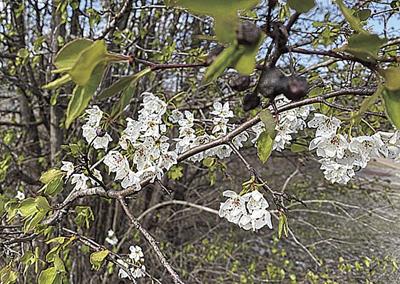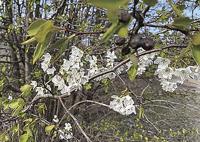A few days ago I received an email from a Festus resident who wants to reforest his backyard and asked for more information about native species. He was looking for hearty hardwoods and ornamental trees. He really stole my heart when he said he wanted to make sure he didn’t plant Bradford pear trees.
I thanked him for that pledge and provided contact information for Forest Releaf of Missouri in St. Louis and the state Department of Conservation nursery near Licking as the sources I am most familiar with for insight on native trees.
I anxiously await the seedlings I ordered last fall from the George O. White State Forest Nursery. The flowering dogwoods I was scheduled to receive this spring are sold out, but the wild plum trees that are also on my order form are still available at mdc.mo.gov.
A few days after that local correspondence, I got an email from the conservation department. The press release headline said, “MDC recommends avoiding invasive Callery pear tree during spring planting.”
My initial reaction was that the organization with a mission to protect the flora and fauna of our state should make a stronger statement against what is rapidly becoming a scourge on our countryside, but the release maintained its tepid tone.
“The Missouri Department of Conservation urges the public to avoid this nonnative tree species when shopping for a new tree.”
MDC should do more than urge and recommend. It’s not likely they could champion a cause to outlaw the trees, but they need a stronger message against planting something they know to be a real problem. Bradford pear trees seemed like a good idea at one time, but now that the spread of these invaders is running rampant, a beefed-up approach is needed.
One answer to that call is a cooperative effort of the conservation department, the Missouri Invasive Plant Council, Forest ReLeaf of Missouri, and Forrest Keeling Nursery. The annual buyback program provides a free replacement tree to anyone who cuts down a problematic pear tree on their property and submits a picture online. For more details on the buyback, visit moinvasives.org and register before April 13.
The Bradford or Callery pear, also known as the Cleveland Select, Autumn Blaze, or Aristocrat, multiplies quickly and crowds out native plants, the press release stated.
“The Callery pear rose to fame as a popular ornamental landscape tree in the 1960s because it was inexpensive, it grew fast, and it provided white blooms in the spring,” said Russell Hinnah, state forestry field programs supervisor. “But that’s where the list of benefits ends. Different varieties of the tree were planted close to each other, they cross-pollinated, and spread everywhere.”
Callery pears’ ability to cross-pollinate is why many roadsides, rights-of-way, parks, and other natural areas are filled with white blooms every spring. The trees are infamous for their stinky smell, but also have poor branch structure. They don’t fare well in bad weather, often losing limbs or splitting apart.
“The best decision is to plant a tree species native to Missouri, and there are several great trees to substitute,” Hinnah said. “Serviceberry trees produce similar white blooms in the spring, and they have small red fruits that attract wildlife.”
Other alternatives include American plum, hawthorn, eastern redbud, and Missouri’s state tree, the flowering dogwood. Hawthorns provide bountiful fruit and attractive fall color, while dogwoods thrive in shady areas, but can be difficult to grow.
I look forward to planting my new little trees when they arrive, but I don’t have a Callery pear I could cut down to exchange for another tree. I can find them all around my hometown this time of year, and hundreds if not thousands of these invaders with their bright white blooms all over Jefferson County. Cut a tree, get one free.
John Winkelman has been writing about outdoors news and issues in Jefferson County for more than 30 years and is the Associate Editor for Outdoor Guide Magazine. If you have story ideas for the Leader outdoor news page, e-mail ogmjohnw@aol.com, and you can find more outdoor news and updates at johnjwink.com.




